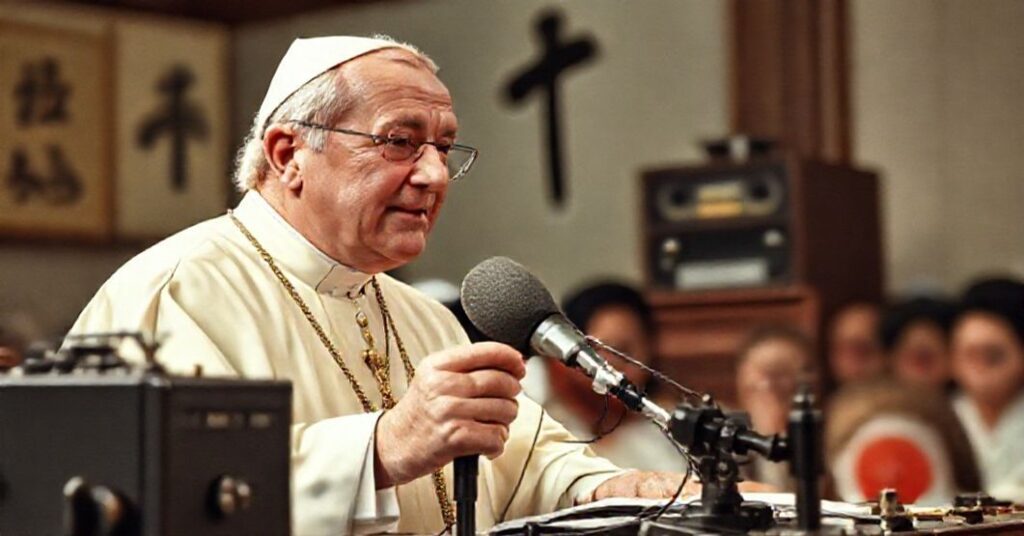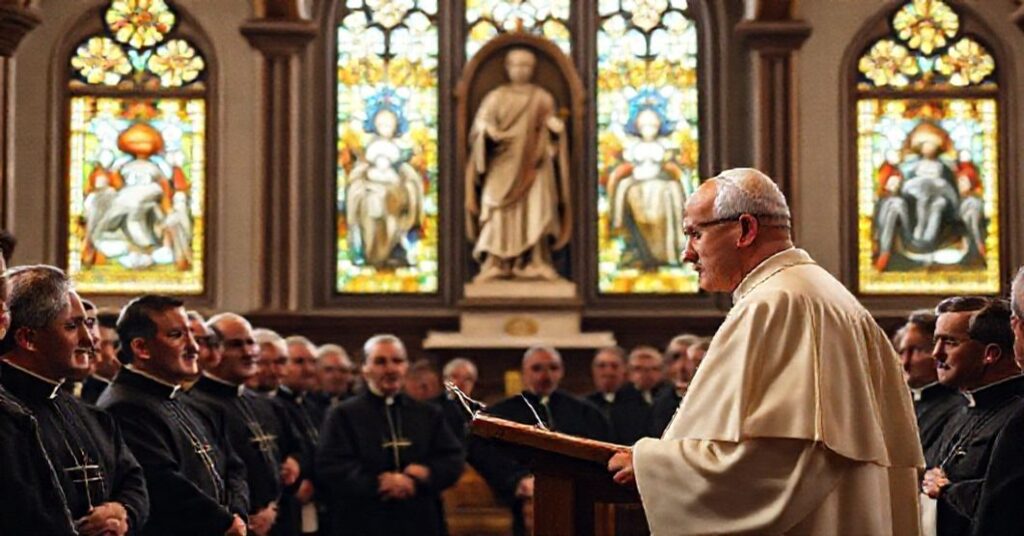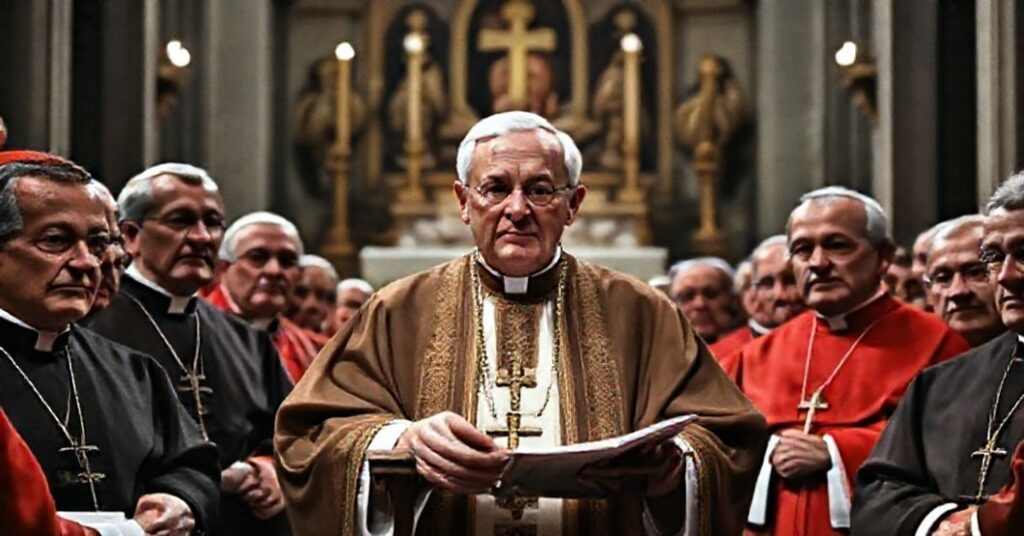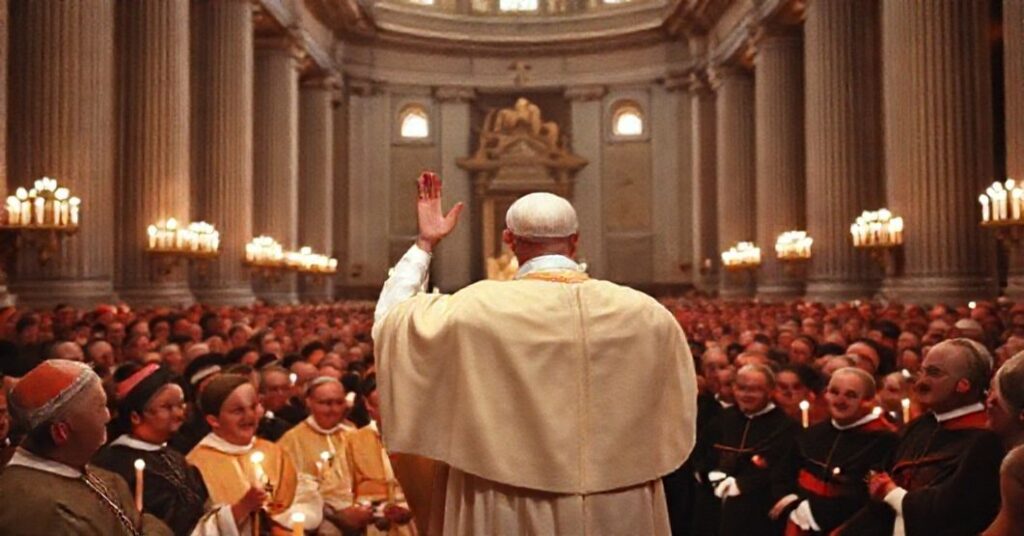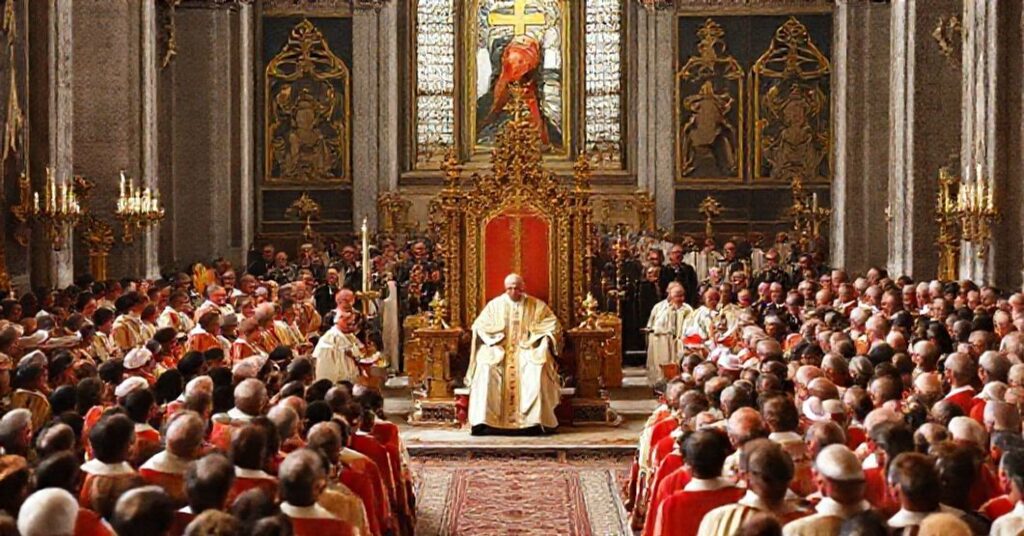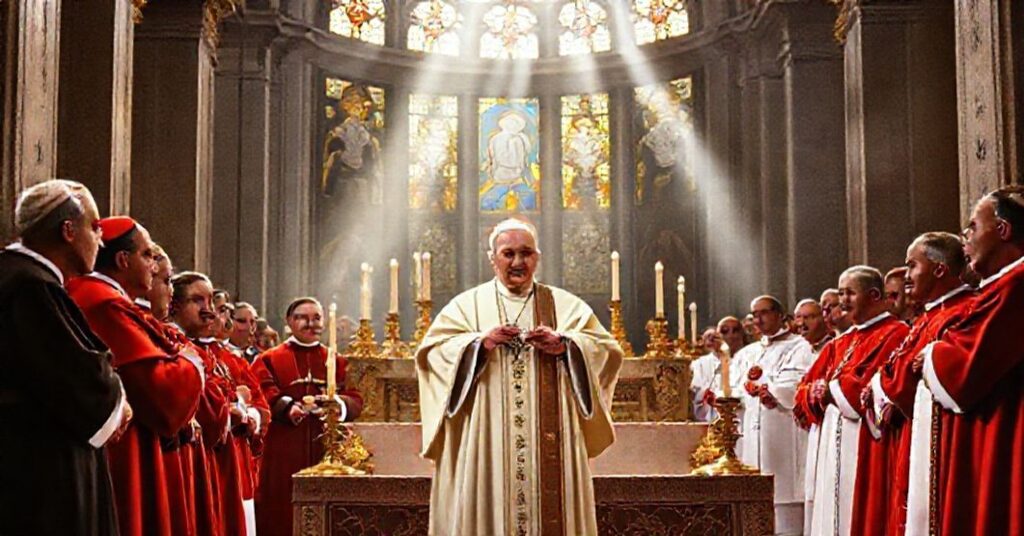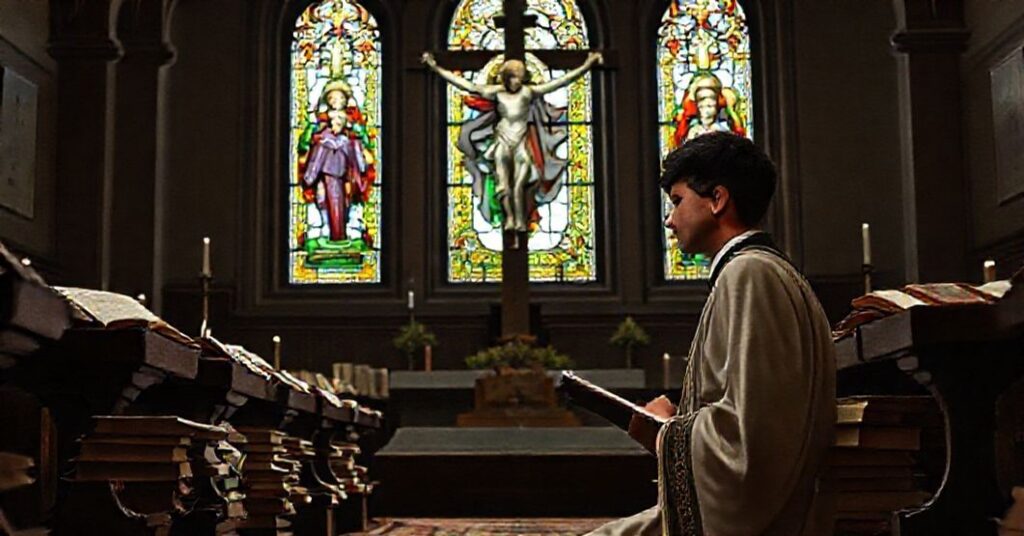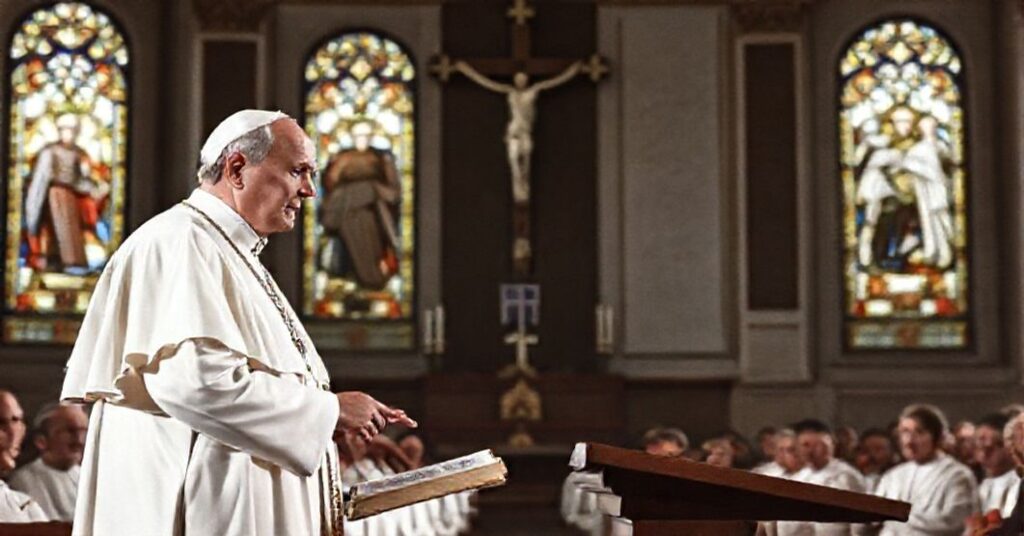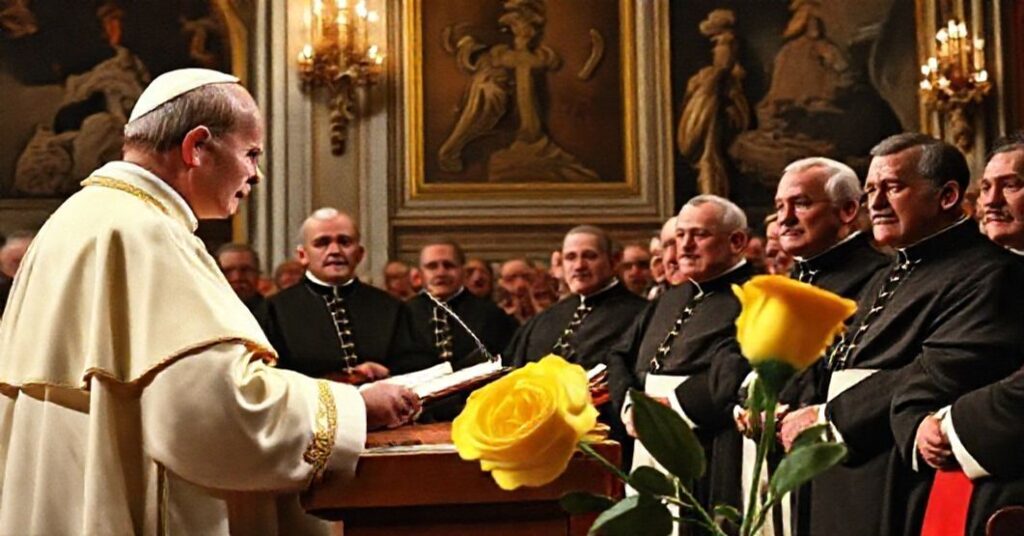Nuntius radiophonicus de mense Maio et Concilio (1959.04.27)
The radiophonic message of 27 April 1959 from John XXIII calls the clergy and faithful to intensified Marian prayers during the month of May for the success of the announced ecumenical council. It presents Our Lady as particularly present and active “in our age,” as powerful mediatrix before Divine Mercy, intimately united with the Church, and thus as the natural focus of supplication so that the council may obtain heavenly assistance and a “happy outcome.”


